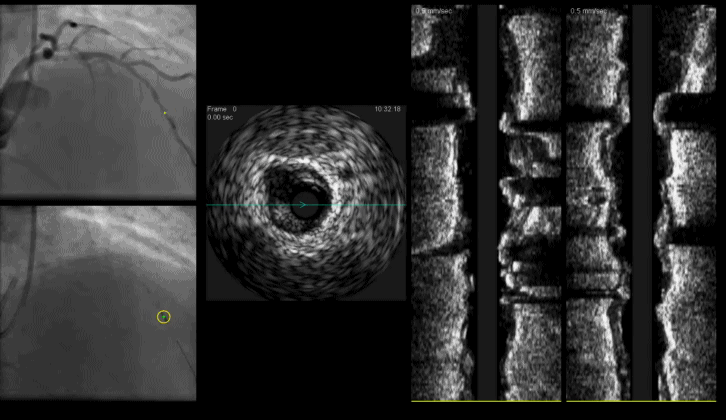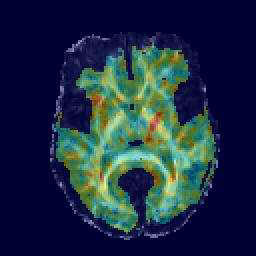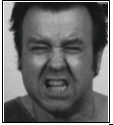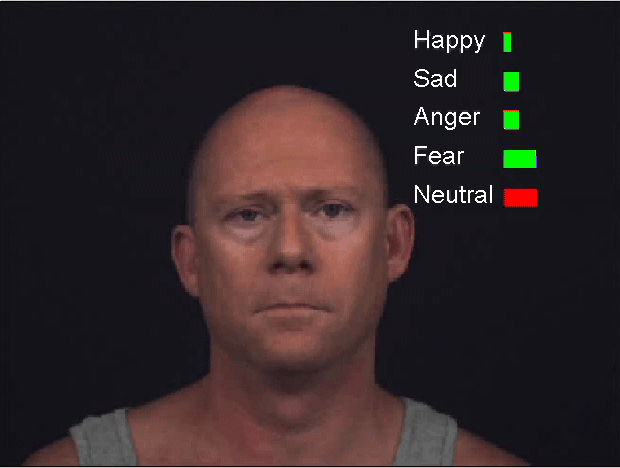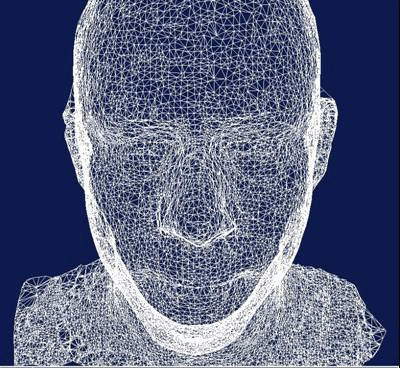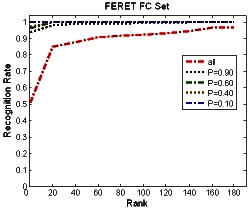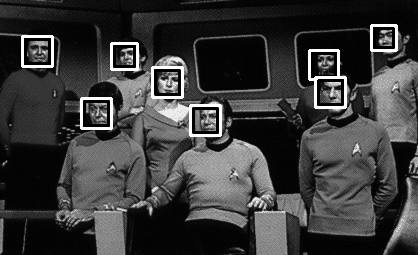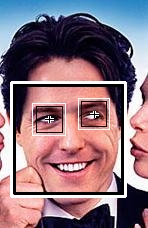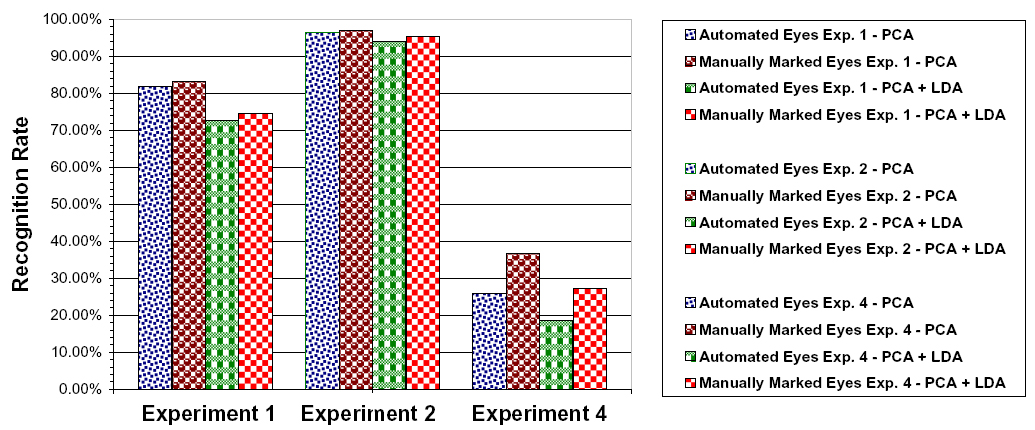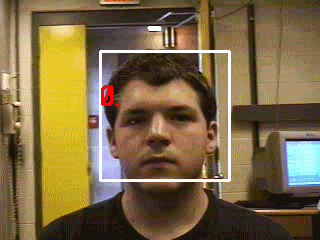Research Philosophy
"Perception can be deception, but reflection is reality"
Projects
Here is a list of non-confidential projects and topics which I have worked on:
Online Learning for Tracking (Siemens)
Graph Based Curve Detection (Siemens)
Image Based Tracking for Angio/IVUS Co-registration (Siemens)
Endocardium Tracking (Siemens)
Guidewire Tracking for Interventions (Siemens)
Diffusion Tensor Images (DTI) Classification (UPENN)
Facial Expression Analysis of Schizophrenia (UPENN)
Performance Modeling and Prediction of Face Recognition Systems (RPI)
Multi-View Face Detection (RPI)
Eye Detection and Face Recognition (RPI)
Face Tracking and Pose Estimation (RPI)
|
|
|
|
|
Online Learning for Catheter Tracking An online linear discriminant learning method is developed. Combioned with robust measurement fusion in a Bayesian tracking framework, the method can successfully tracking catheters in challenging clinical environments, such as contrast injection, occlusion, and large motions. Reference: Peng Wang, Yefeng Zheng, Matthias John, D. Comaniciu, Catheter Tracking via Online Learning for Dynamic Motion Compensation in Transcatheter Aortic Valve Implantation, International Conference on Medical Image Computing and Computer Assisted Intervention (MICCAI), 2012 |
|
|
|
|
Image Based Tracking for the Co-Registration of Angiography and IVUS I developed the first automatic image based tracking system for the co-registration of angiography and intravascular ultrasound (IVUS) images. The tracking task is very challenging due to low visibility of devices in X-ray images and complex motions. The algorithm has been validated in multiple clinical sites, and has been integrated into a highlighted Siemens product.
Reference: Peng Wang, et. al., Image-based Device Tracking for the Co-registration of Angiography and Intravascular Ultrasound Images, International Conference on Medical Image Computing and Computer Assisted Intervention (MICCAI), 2011 |
|
|
|
|
|
|
Endocardium Tracking Reference: Peng Wang, S. Zhou, M. Szucs, Endocardium tracking by fusing optical flows in straightened images with learning based detections, IEEE International Symposium on Biomedical Imaging: From Nano to Macro (ISBI), 2011 |
|
|
|
|
Guidewire Tracking A Bayesian framework for measurement fusion is developed to track deformable guidewire in fluoroscopy. A hierarchical framework is implement to efficiently track complex guidewire motions.
Reference: Peng Wang, et. al., Robust Guidewire Tracking in Fluoroscopy IEEE International Conference on Computer Vision and Pattern Recognition (CVPR), 2009 |
|
|
|
|
|
|
Diffusion Tensor Images (DTI) Classification Diffusion tensor imaging (DTI) provides rich information about brain tissue structure especially in the white matter. Identifying patterns of brain changes induced by pathology is therefore crucial to clinical studies. I present a novel framework that uses a combination of DTI-based anisotropy and geometry features to effectively identify brain regions with pathology-induced abnormality, and to classify brains into the diseased and healthy groups. Reference: Peng Wang, and Ragini Verma, On Classifying Disease-induced Patterns in the Brain using Diffusion Tensor Images, Medical Image Computing and Computer Assisted Intervention (MICCAI), 2008 |
|
|
|
|
|
|
|
|
Facial Expression Analysis of Schizophrenia This research aims to develop computer vision and pattern recognition methods to study the facial expression impairments of patients with neuropsychiatric disorders, such as schizophrenia. Patients with schizophrenia usually have impaired expressions in the form of "flat" or "inappropriate" affects. In this research, I apply computer vision, machine learning and pattern recognition methods to quantify such affective deficits, with the use of different types of data, including videos and 3D data . |
|
Background What is Schizophrenia? An Overview of Schizophrenia from NIMH Schizophrenia Research in the University of Pennsylvania: Brain Behavior Center
Methods
Video Based Analysis Surface Based Analysis
References: Peng Wang, F. Barrett, E. Martin, M. Milanova, Raquel E. Gur, Ruben C. Gur, Christian Kohler, and Ragini Verma, Automated Video Based Facial Expression Analysis of Neuropsychiatric Disorders, Journal of Neuroscience Methods, 2008 Peng Wang, Christian Kohler, Fred Barrett, Raquel Gur, Ruben Gur, and Ragini Verma, Quantifying Facial Expression Abnormality in Schizophrenia by Combining 2D and 3D Features, IEEE International Conference on Computer Vision and Pattern Recognition (CVPR), 2007 Peng Wang, Christian Kohler,and Ragini Verma, Estimating Cluster Overlap on Manifolds and its Application to Neuropsychiatric Disorders, IEEE Workshop on Component Analysis Methods (with CVPR), 2007 |
|
|
|
|
|
|
Performance Modeling and Prediction of Face Recognition Systems This work presents multiple ways of optimizing and predicting the performance of face recognition systems based on the similarity scores output from face recognition systems. Experimental results demonstrate that the performance of face recognition systems can be significantly improved using the presented methods. |
|
References: Peng Wang, Qiang Ji, and James Wayman, Modeling and Predicting Face Recognition System Performance Based on Analysis of Similarity Scores, IEEE Trans. on Pattern Analysis and Machine Intelligence (PAMI), Vol. 29, No.4, April 2007 Peng Wang ,and Qiang Ji, Performance Modeling and Prediction of Face Recognition Systems, CVPR, 2006 Peng Wang, Lam Cam Tran and Qiang Ji, Improving Face Recognition by Online Image Alignment, ICPR, 2006 |
|
|
|
|
|
|
Multi-View Face Detection I developed a recursive nonparametric discriminant analysis (RNDA) method to extract powerful features for multi-view face and eye detection. Based on extracted RNDA features, probabilistic classifiers are constructed and combined together to form a strong classifier using AdaBoost. Compared to commonly used Haar wavelet features, RNDA features show better accuracy in detecting complex objects, such as profile faces and eyes. |
|
References: Peng Wang, and Qiang Ji, Multi-View Face and Eye Detection Using Discriminant Features, Computer Vision and Image Understanding (CVIU), Volume 105, Issue 2, February 2007 Peng Wang, and Qiang Ji, Learning Discriminant Features for Multi-View Face and Eye Detection, CVPR, 2005 Peng Wang, and Qiang Ji, Multi-View Face Detection under Complex Scene based on Combined SVMs, ICPR, 2004 |
|
|
|
|
|
|
Eye Detection We detect eyes from near-frontal faces using discriminant features combined by AdaBoost. Experiments demonstrate that face recognitions using our automatically localized eyes provide accuracy comparable to those using manually marked eyes |
|
Fig. Summary of face recognition accuracy with automatic and manual eye positions on FRGC V1.0 database Reference: Best Paper Award: Peng Wang, Matthew B. Green, Qiang Ji and James Wayman, Automatic Eye Detection and Its Validation, IEEE Workshop on Face Recognition Grand Challenge Experiments (with CVPR), 2005 Peng Wang, Lam Cam Tran and Qiang Ji, "Improving Face Recognition by Online Image Alignment", ICPR, 2006 |
|
|
|
|
|
|
A Real-time System of Face Detection and Recognition I build a near real-time system which can perform face and eye detection, and online face recognition simultaneously. The system can run near real-time at a laptop using a simple CCD camera. The demo video captured from screen is shown as follows. In this demo, the name of recognized person is shown above his/her face. |
|
|
|
|
|
Face Tracking and Pose Estimation References: Peng Wang and Qiang Ji, Multi-View Face Tracking with Factorial and Switching HMM, WACV, 2005 Peng Wang and Qiang Ji, Robust Face Tracking via Collaboration of Generic and Specific Models, IEEE Trans. on Image Processing, 2008 Jul. 17(7):1189-99 |
